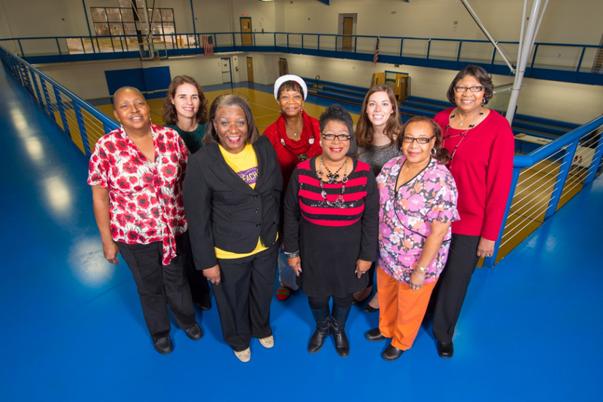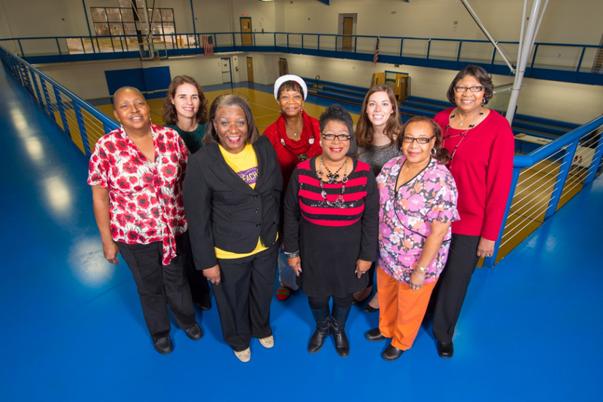
Credit: University of Michigan
ANN ARBOR and FLINT, Mich. — Following the onset of a stroke, restoring blood flow to the brain as quickly as possible is critical for preventing disability and improving the chances of recovery. This crucial window for treatment is a narrow one – about 4 ½ hours – and the earlier the treatment, the better the outcome.
More than 7 million stroke survivors in the U.S. are left with persistent disability after a stroke, such as weakness or speech and language problems, often because treatment was given too late, or not at all. "Time lost is brain lost," as one saying goes. Each minute of delay results in an estimated loss of 1.9 million neurons, which, over the course of an hour without treatment, can be roughly compared to 3.6 years of normal brain aging.
Stroke treatments must be administered in the emergency department, often in the form of a "clot-busting" drug called tPA, and can reduce the risk of disability by more than 30 percent. Yet because of a variety of barriers to timely evaluation and treatment, fewer than 5 percent of those who experience a stroke ever receive these therapies.
Under a five-year, $2.5 million grant from the National Institute on Minority Health and Health Disparities, a team of University of Michigan researchers and community partners is embarking on a novel project to increase acute stroke treatment rates in the community of Flint, Michigan.
Led by Lesli Skolarus, M.D., M.S., an associate professor of neurology at the U-M Medical School and a board-certified vascular neurologist, the team is testing a hospital- and community-based intervention called the "Stroke Ready" program that will attempt to address delays that can occur before and after arrival to the hospital, ultimately reducing the likelihood of stroke treatment and lessening its effectiveness.
Because one of the most significant opportunities to increase stroke treatment rates lies in those critical first few moments immediately following a suspected stroke, a primary goal of the program aims to boost community "stroke preparedness" by helping people recognize the symptoms of stroke and encouraging them to call 9-1-1 immediately to get help on its way.
"Acute stroke treatments dramatically reduce post-stroke disability, but they are also extremely underutilized," Skolarus explains. "We hope this program will boost stroke awareness in Flint and help get treatment to more stroke patients, so that the burden of stroke can be reduced in this community."
The project is co-led by community partners that include Hurley Medical Center, Bridges into the Future, an African-American faith-based community group in Flint, and Community Based Organization Partners, also headquartered in Flint, all of which Skolarus has collaborated with for many years. The Healthy Flint Research Coordinating Center, a collaboration between the Flint Community, UM-Flint, UM-Ann Arbor, and Michigan State University, is another partner in the project.
Community advisory board members, including Dr. Skolarus (back row, second from left), who have partnered on projects to boost stroke treatment and awareness in Flint.
Flint, which has received national attention for its ongoing water crisis, also has the lowest acute stroke treatment rate of any community of its size in the country. Flint is an urban, underserved city of nearly 100,000 residents, about 60 percent of whom are African-American – a group which has higher rates of stroke and worse post-stroke outcomes (experiencing 30 percent more disability) compared to whites.
The Stroke Ready program builds on Skolarus' previous research that identified stroke-readiness as a prime target for intervention and also demonstrated the effectiveness of working in partnership with faith-based partners in the Flint community. Her previous work also found that even if people were able to identify the warning signs of stroke, they may not be as quick to call 9-1-1 because of concerns about medical costs and ambulance response time, as well as not being familiar with why prompt treatment for stroke at a hospital is so important. The program aims to address some of those barriers.
The community component of Stroke Ready will depend on peer leaders based in various faith communities around Flint, while the team will also work with Hurley, Flint's only safety-net hospital, to explore barriers and facilitators to timely acute stroke care and test strategies to reduce treatment delays. The community activities will expand to include workshops, videos, and social media outreach.
Skolarus notes that the community partnership has been key to the success of her earlier pilot program and the launch of Stroke Ready. "Our community stakeholders ensure that the intervention is community-relevant, and assist in recruitment, implementation and sharing the findings – their collaboration has been instrumental in this work."
The program will assess acute stroke treatment rates in Flint before and after the program, and will also examine the effects of the community and hospital interventions separately and together to inform future projects aimed at increasing treatment rates. It will also evaluate the cost-effectiveness of the intervention.
###
Project co-investigators include Marc Zimmerman, Ph.D., professor of health behavior and health education at the U-M School of Public Health; Lewis Morgenstern, M.D., professor of neurology, neurosurgery, and emergency medicine, at the U-M Medical School, professor of epidemiology at the U-M School of Public Health, and director of the U-M Stroke Program; Anne Sales, M.S.N., Ph.D., R.N., professor of learning health sciences at the U-M Medical School; and James Burke, M.D., M.S., assistant professor of neurology at the U-M Medical School. All U-M members of the project team are affiliated with the Institute for Healthcare Policy & Innovation.
Media Contact
Kara Gavin
[email protected]
734-764-2220
@UMHealthSystem
http://www.med.umich.edu
############
Story Source: Materials provided by Scienmag




